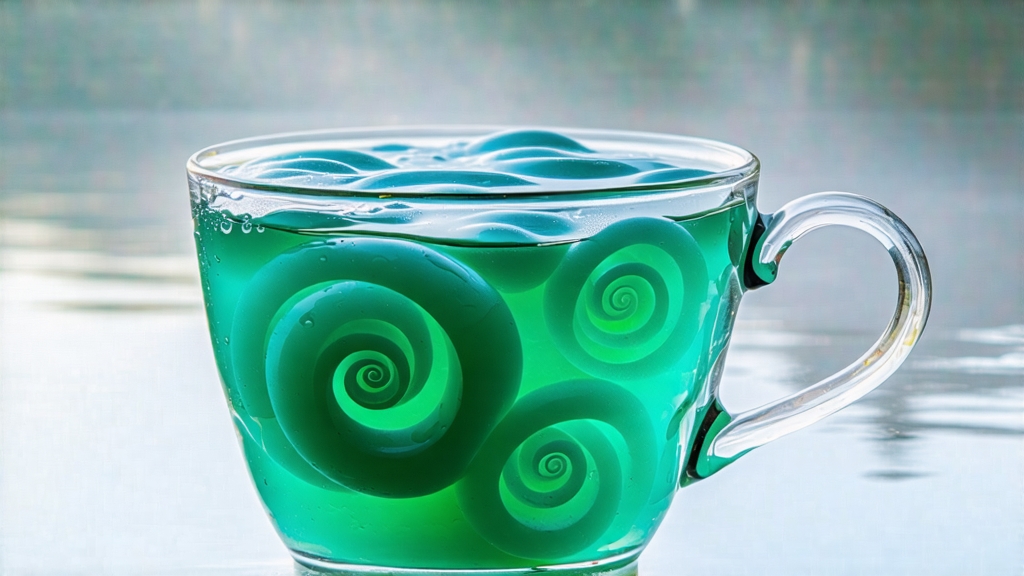
Tucked between the mist-laden hills of Dongting Mountain and the gentle ripples of Lake Tai in Jiangsu Province, Biluochun—literally “Green Snail Spring”—has for three centuries been the shy songbird of Chinese green tea. Foreign gazetteers once rendered its name “Pi Lo Chun,” but whatever the spelling, the tea remains a coil of jade sweetness that unfurls like a fern in hot water, releasing an aroma so unexpectedly floral that first-time drinkers often ask whether petals have been blended into the leaf. No additives ever intrude; the fragrance is the tea’s own, born of fruit trees, camellia flowers, and the lacustrine fog that acts as both greenhouse and perfumer.
History
The earliest written record appears in 1675, when the Kangxi Emperor’s southern tour reached the lake. Local governor Song Luo presented a downy, spiral-shaped tea so delicate that court scholars compared it to “a green snail in early spring.” Kangxi, finding the original name “Xia Sha Ren Xiang” (literally “scary fragrance”) inelegant, rechristened it Biluochun, fusing its color, curl, and season. By the late Qing the tea had surpassed Longjing in price at the Suzhou tea auction, and in 1915 it won gold at Panama-Pacific Expo, sealing its global reputation. Today only about 1,200 mu (80 hectares) of core-zone gardens on Dongting’s East and West peaks are recognised as true-origin, yielding perhaps 8 tonnes a year—rarer than the more publicised West Lake Longjing.
Cultivar & Micro-terroir
The bushes belong to a diminutive clone of Camellia sinensis var. sinensis nicknamed “Xiao Ye” (small leaf). Its cell walls are thin, allowing rapid withering and high aroma. More decisive is the polyculture: peach, plum, apricot and loquat trees are interplanted every three metres; their roots share mycorrhizal fungi with the tea, while blossoms in March-April shower nectar volatiles onto the buds. Night temperatures drop quickly because of the 2,000 km² lake acting as a heat sink; the diurnal swing of 8–10 °C slows photosynthesis, concentrating amino acids—especially L-theanine—so that sweetness outruns bitterness.
Plucking Calendar
Authentic Biluochun is picked in a frantic three-week window beginning when local lake fish start to surface for air—roughly 20 March to 10 April. Only the “single bud with the just-opened first leaf” (called qiao tou) is taken, weighing 1.2–1.5 g per hundred shoots. Experienced pickers finish before 10 a.m. so that dew evaporates but turgor remains; any later and the sun reddens the edges, ruining the signature jade-white down.
Crafting the Spiral
Within thirty minutes of plucking the basket arrives at the village workshop, where three masters handle the four classical steps:
- Kill-green (sha qing): 4–5 minutes on an iron pan heated to 180 °C. The operator’s bare hand flips 250 g of leaf, a motion called “trembling dragon and phoenix claws.” Temperature is judged by ear: when the rustle resembles frying sesame, it is dropped to 130 °C.
- Rolling-coiling (cuo tuan): while still warm, the leaf is cupped in a linen cloth and rolled on bamboo tray. The master rotates his wrists 360° forty times, forcing cell sap to the surface and pre-forming the tight spiral.
- Initial drying (hong gan): the coils are tossed again on the pan at 80 °C for eight minutes until 40 % moisture remains.
- Final baking (zu huo): charcoal embers of 60-year-old Qingkui tung tree are covered with ash to hold 50 °C. The tea rests on a wire sieve 8 cm above the ash, hand-turned every minute for twenty minutes. The slow infrared heat polishes the down and fixes the floral note.
A finished kilogram needs 70,000 buds and six labour hours, explaining its price premium.
Grades & Nomenkature
State standard GB/T 18957 recognises five grades, but connoisseurs speak of two micro-grades within the top tier:
- Supreme Jade (Tou Cui): picked before Qingming festival